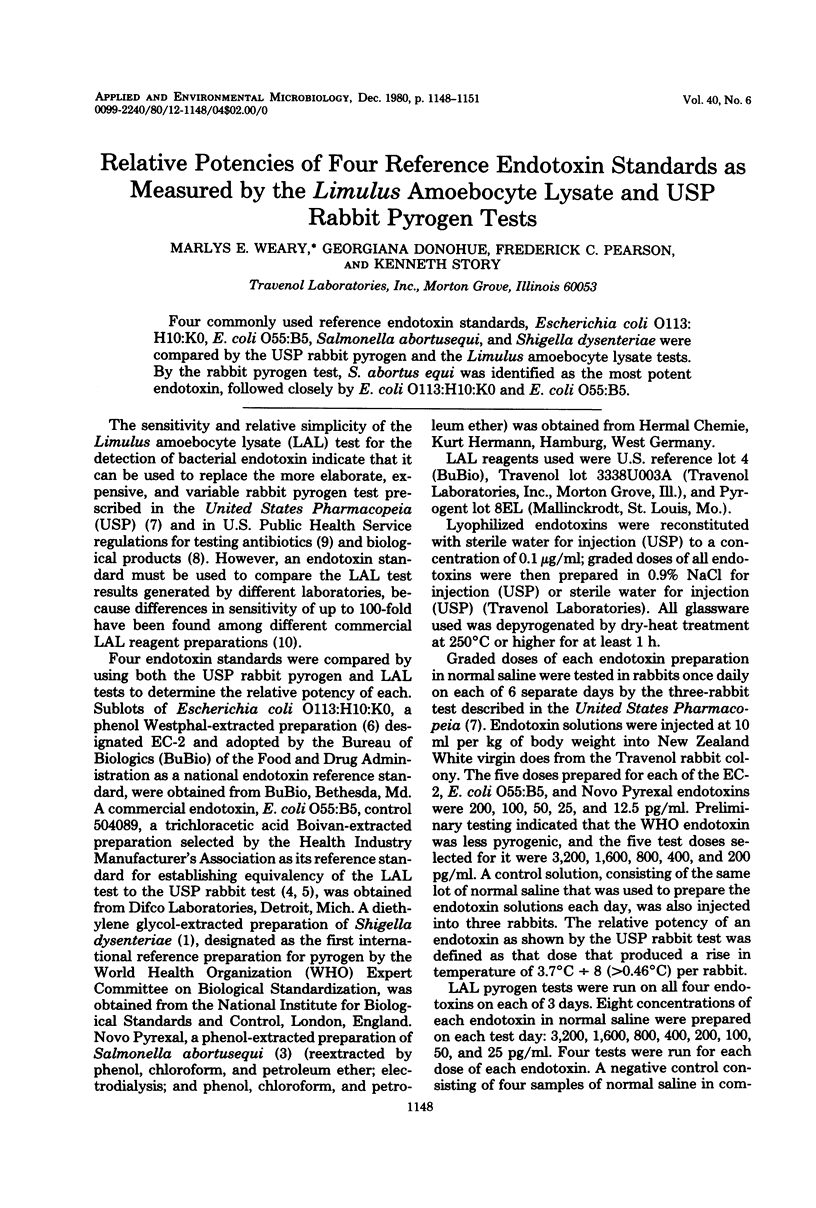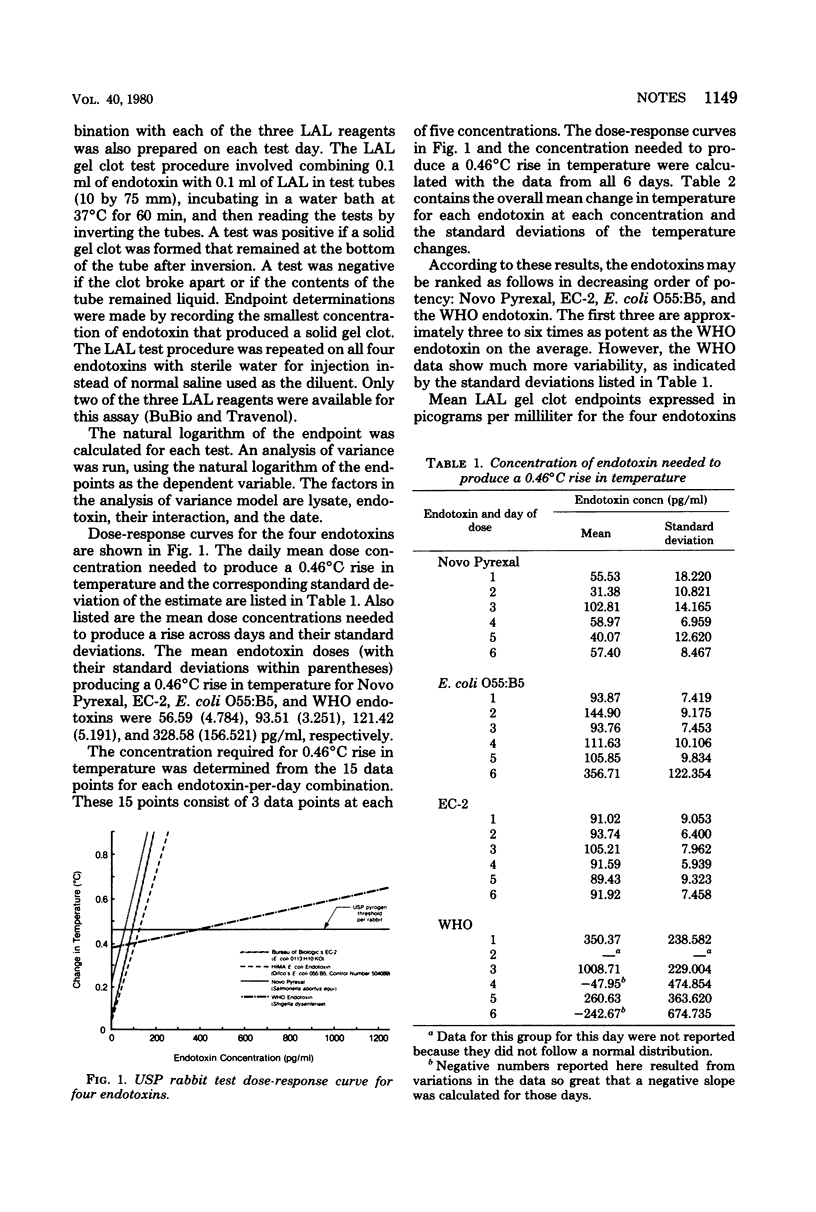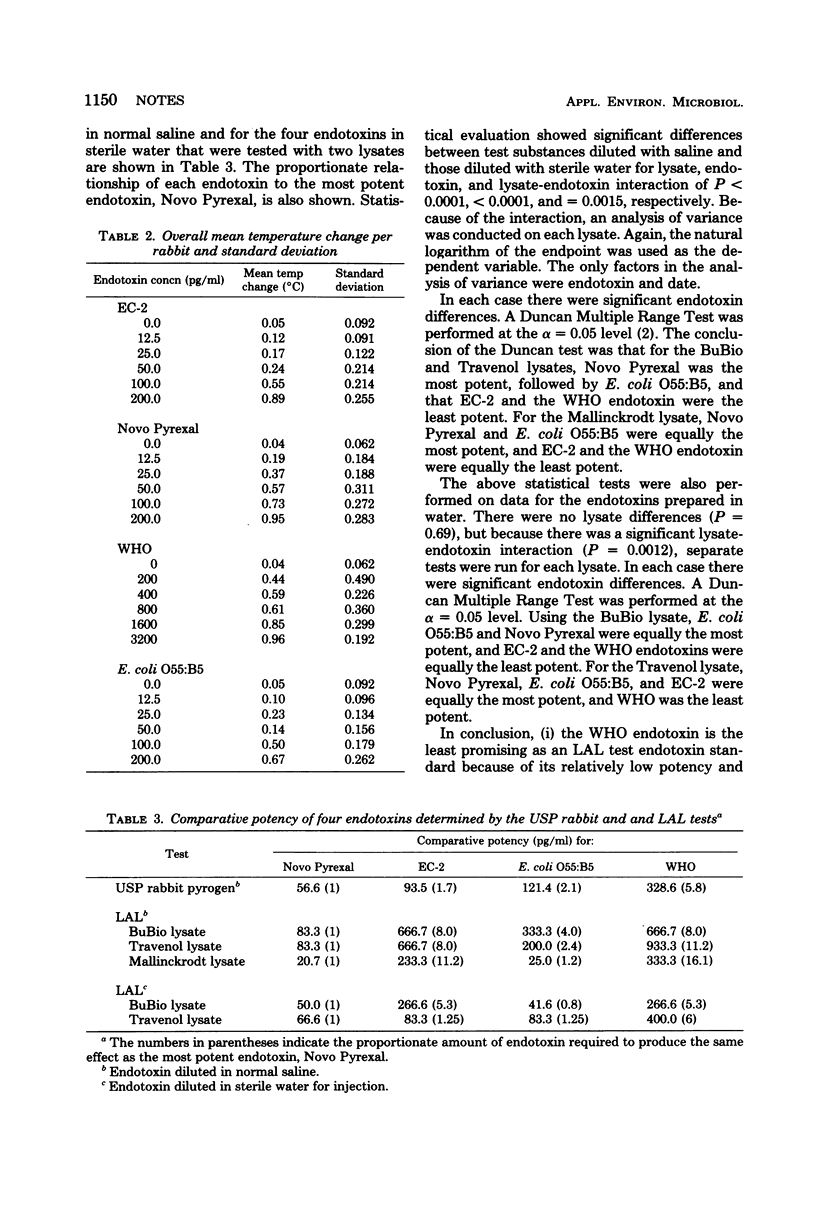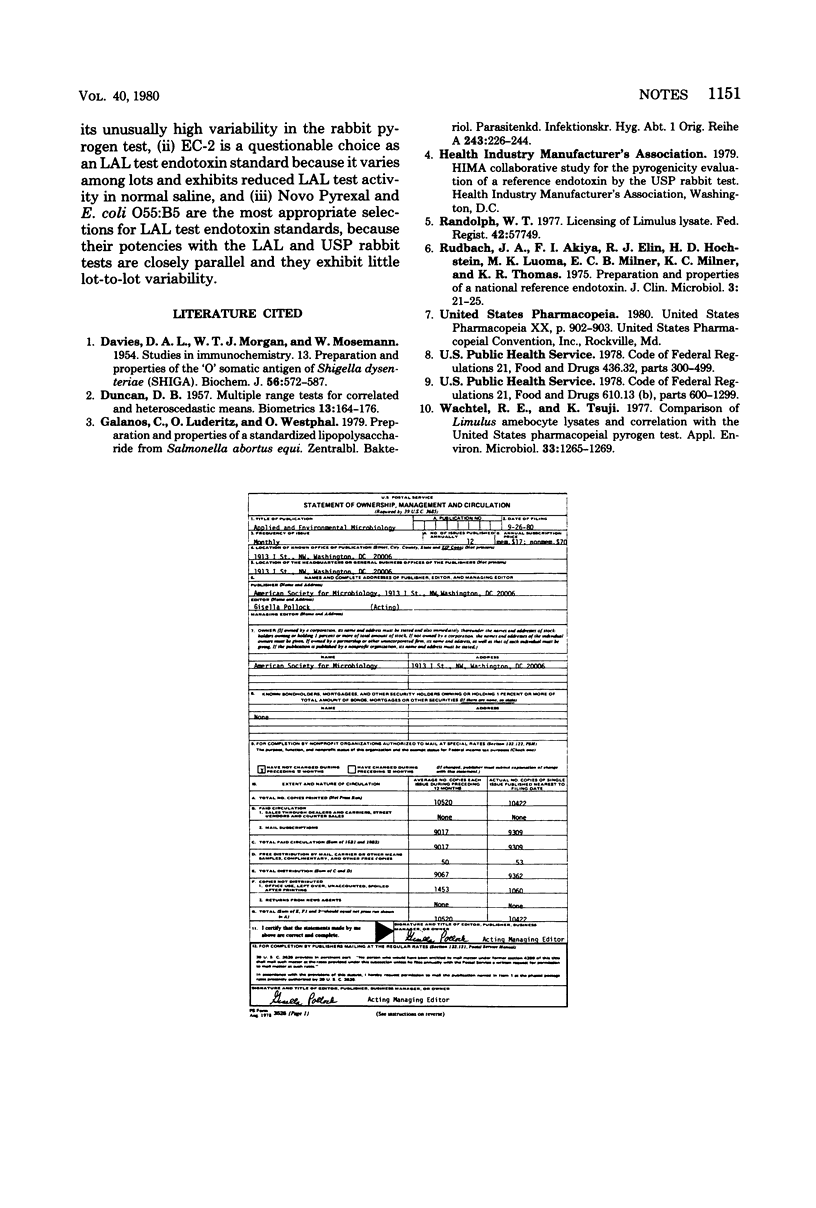Abstract
Four commonly used reference endotoxin standards, Escherichia coli O113:H10:K0, E. coli O55:B5, Salmonella abortusequi, and Shigella dysenteriae were compared by the USP rabbit pyrogen and the Limulus amoebocyte lysate tests. By the rabbit pyrogen test, S. abortus equi was identified as the most potent endotoxin, followed closely by E. coli O113:H10:K0 and E. coli O55:B5.
Full text
PDF



Selected References
These references are in PubMed. This may not be the complete list of references from this article.
- DAVIES D. A., MORGAN W. T., MOSIMANN W. Studies in immunochemistry. 13. Preparation and properties of the 'O' somatic antigen of Shigella dysenteriae (Shiga). Biochem J. 1954 Apr;56(4):572–581. doi: 10.1042/bj0560572. [DOI] [PMC free article] [PubMed] [Google Scholar]
- Galanos C., Lüderitz O., Westphal O. Preparation and properties of a standardized lipopolysaccharide from salmonella abortus equi (Novo-Pyrexal). Zentralbl Bakteriol Orig A. 1979 Apr;243(2-3):226–244. [PubMed] [Google Scholar]
- Rudbach J. A., Akiya F. I., Elin R. J., Hochstein H. D., Luoma M. K., Milner E. C., Milner K. C., Thomas K. R. Preparation and properties of a national reference endotoxin. J Clin Microbiol. 1976 Jan;3(1):21–25. doi: 10.1128/jcm.3.1.21-25.1976. [DOI] [PMC free article] [PubMed] [Google Scholar]
- Wachtel R. E., Tsuji K. Comparison of limulus amebocyte lysates and correlation with the United States Pharmacopeial pyrogen test. Appl Environ Microbiol. 1977 Jun;33(6):1265–1269. doi: 10.1128/aem.33.6.1265-1269.1977. [DOI] [PMC free article] [PubMed] [Google Scholar]


